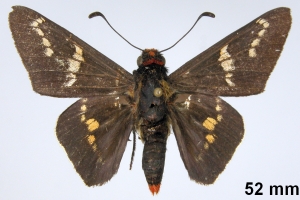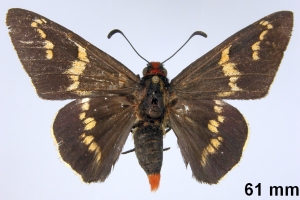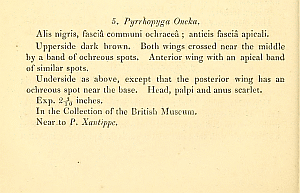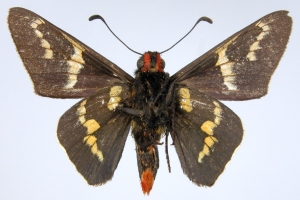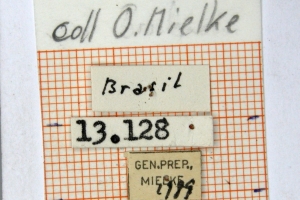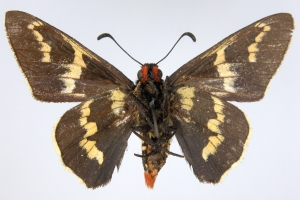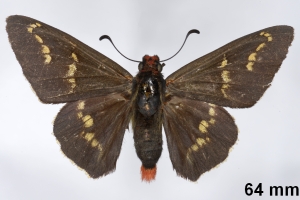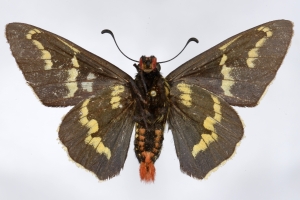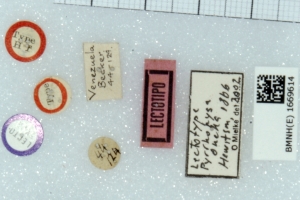Länder:

 +1Kontinente:SA
+1Kontinente:SA


 +1Kontinente:SA
+1Kontinente:SANeues Layout der Navigation (Beta Test)
LebendfotosFalterDiagnoseWeitere InformationenAndere KombinationenFaunistikLiteraturInformationen auf anderen Websites (externe Links)
2. Diagnose
2.1. Männchen
1-3: ♂, Daten siehe Etiketten (fot.: Ernst Brockmann, Fotos bearbeitet: Michel Kettner), coll. Departamento de Zoologia, Universidade Federal do Paraná, Curitiba, Paraná, Brazil.
2.2. Weibchen
1-3: ♀, Daten siehe Etiketten (coll., det. & fot.: Ernst Brockmann, Fotos bearbeitet: Michel Kettner)
4-6: Lectotypus ♀, Daten siehe Etiketten (fot.: Nick V. Grishin, Fotos bearbeitet: Michel Kettner), © Images copyright Trustees Natural History Museum, used with permission.
2.3. Erstbeschreibung
3. Weitere Informationen
3.1. Andere Kombinationen
- Pyrrhopyga [sic] oneka Hewitson, 1866 [Originalkombination]
3.2. Faunistik
Nach Mielke, Brockmann & Mielke (2022) kommt die Art in Brasilien vor.
Locus typicus: Venezuela (Funddaten fraglich!).
(Autor: Michel Kettner)
3.3. Literatur
- Brockmann E., Mielke, C. G. C. & O. H. H. Mielke (2022): Hesperiidae III: New World Pyrrhopyginae, short text and plates. — In: E. Bauer & T. Frankenbach (ed.) (2022): Butterflies of the World 50: 40 p. + 76 pl. Keltern.
- Erstbeschreibung: Hewitson, W. C. (1866): Descriptions of new Hesperidae. — The Transactions of the Entomological Society of London. Third Series 2 (6): 479-500.
- Mielke, O. H. H., Brockmann, E. & C. G. C. Mielke (2022): Hesperiidae II: New World Pyrrhopyginae, detailed text. — In: E. Bauer & T. Frankenbach (ed.) (2022): Butterflies of the World 49: 120 pp. Keltern.
- Orellana A. (2008): Pyrrhopyginae de Venezuela (Lepidoptera: Hesperioidea: Hesperiidae). — Entomotropica 23 (3): 177-291. [PDF auf saber.ucv.ve]


